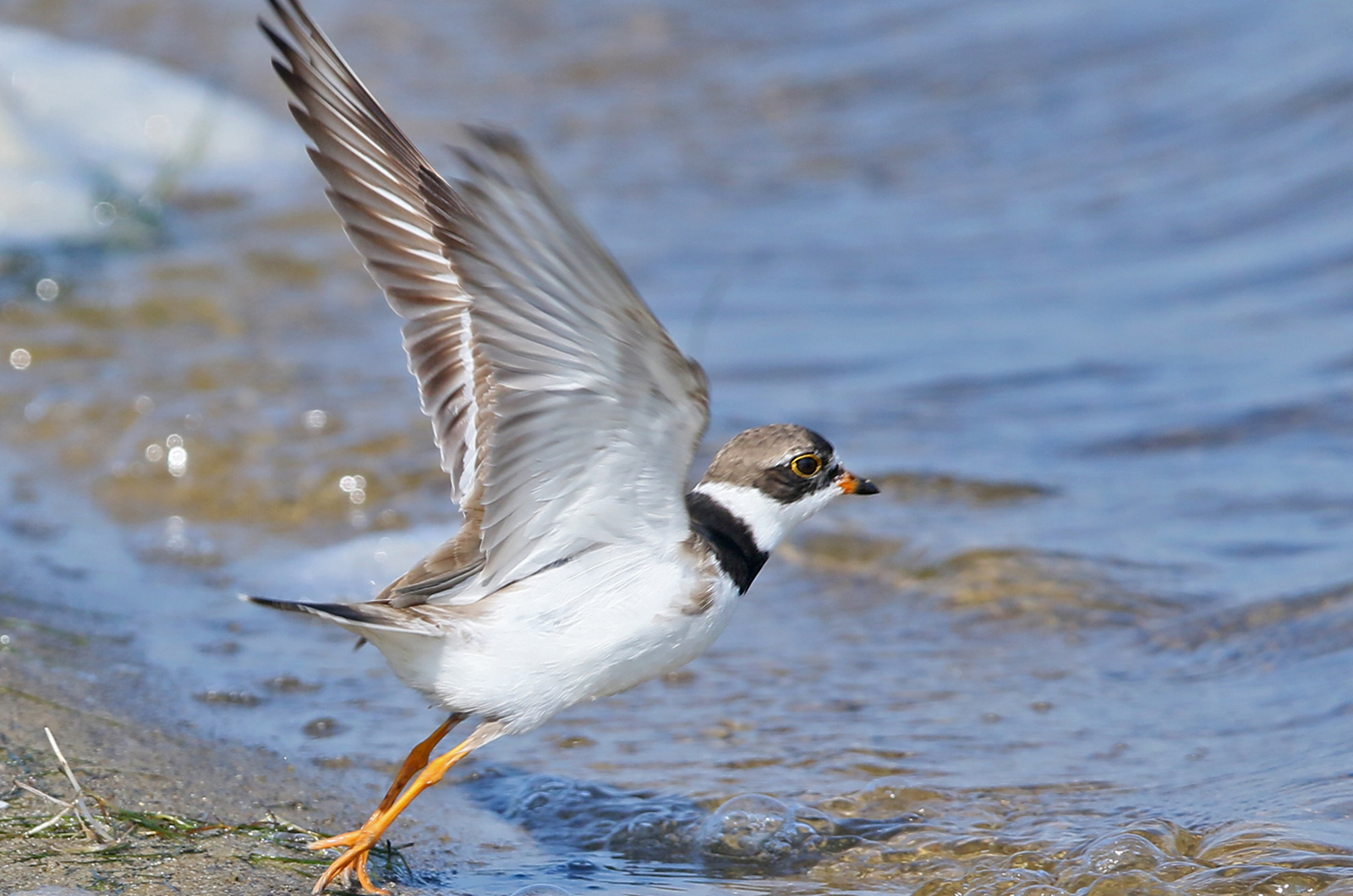It is the baby bird time of the year. Many of these youngsters do not look like their parents and may not have grown all their feathers yet. We may need to see the attending parents to know which species it is. Yet they will soon be on their own.
Cynthia Bloomquist spotted adult downy woodpeckers with their two youngsters at her West Tisbury home on July 5. Seth Buddy observed seven mallard ducklings trailing after their parents on July 6. The next day he found tree swallows feeding their young on the wing. He then heard and watched nine American crows, including a pink mouthed fledgling noisily begging for food on July 8. All three sightings were on the beach between Mink Meadows and West Chop.
Matt Born located a brood of American woodcock chicks along Clay Pit Road in Aquinnah on July 7. Jim Shoemaker reports seeing eight turkeys, including some recently fledged youngsters, at Sunset Lake on July 13.
The first semipalmated plovers have arrived from way up north. Sky Kardell spotted two of them at Long Point on July 4, Jenna Albaugh saw one on Cape Pogue on July 8 and Chris Scott Norton Point found one on Norton Point on July 10. At Long Point on July 4, Sky Kardell also observed the first of season red knot and the first Bonaparte’s gull.
Sky also discovered the first of the year whimbrel at Long Point on July 11. Seth Buddy watched the first of the season Forster’s tern on the beach between Mink Meadows and West Chop on both July 7 and July 8.
Has the summer seabird show started? Matt Born spotted 50 Wilson’s storm-petrels, 35 Cory’s shearwaters, 65 great shearwaters and four sooty shearwaters near Nomans Land on July 3. Charles Morano saw two Wilson’s storm-petrels in Cape Pogue Bay on July 14. This pelagic species is seldom recorded so close to shore. Sky Kardell reports one Cory’s shearwater from Cape Pogue on July 6 and eight Cory’s off Long Point on July 11.
Short-billed dowitchers are not new for the season but their numbers have greatly increased this month. Sky Kardell located a flock of 40 short-billed dowitchers, the largest flock this month, at Long Point on July 4. Nancy Nordin and Pete Gilmore saw nine on Norton Point on July 7. Pete Gilmore, Nancy Nordin and Lanny McDowell found 30 on Norton Point on July 10. Walt Looney located a flock of 14 in the salt marshes at the southern end of Sengekontacket Pond on July 10. The same day that Bob Shriber watched 15 of them near West Basin Road. Pete Gilmore and I spotted four near Eel Pond on July 11.
Black terns are here in unusually large numbers too. Sky Kardell found 10 of them at Cape Pogue on July 12, while two days later Charles Morano counted at least 17 from Cape Pogue, likely an underestimate as they seemed to be everywhere.
Other shorebirds spotted this week include killdeer, black-bellied plovers, piping plovers, ruddy turnstones, greater yellowlegs, lesser yellowlegs, spotted sandpipers, sanderlings, least sandpipers, semipalmated sandpipers, willets, laughing gulls, ring-billed gulls, and common, least and roseate terns.
Virginia rails are secretive in salt marshes, but this week there were four sightings at John Butler’s Mudhole: two by Jason Brodowski on July 5, one by Susan Santos on July 7, one by Chris Scott on July 8, and I saw one on July 11.
Several other species of interest were spotted this week. Seth Factor heard a bobolink singing and then he spotted it as it flew over the Grey Barn on July 3. Pete Gilmore found a blue-winged warbler at Great Rock Bight on July 3. And Matty King observed a brown creeper at Focus Study Center near Seth’s Pond as it foraged on the underside of a branch on July 6.
Lesser black-backed gulls were spotted by Philip Edmundson at Watcha Pond, three on July 8 and five on July 10.
Seth Factor heard and recorded an amazingly out-of-season white-throated sparrow singing at Cedar Tree Neck on July 4. They are normally here as a winter-resident.
Scarlet tanagers can easily hide in the dense canopies in our woodlands, so it is unusual to have four sightings in July. Bob Shriber observed one at Old South Road in Aquinnah on July 2 and again on July 7. On July 4, Chris Scott spotted two at Waskosim’s Rock and Raye Barbieri located one at Polly Hill Arboretum.
Wood thrushes are another fairly secretive woodland species except when they are singing. There are three sightings this species from early July — Margaret Curtin found one at Hammett Road in Chilmark on July 1 and another along Christiantown Road on July 3, and Nancy Nordin saw one in her West Tisbury yard on July 2.
Seth Buddy observed a lingering common loon fishing successfully close to shore along the beach between Mink Meadows and West Chop on July 5.
Finally, I will describe how I pick which of your sightings make it into this column. Migrants arriving and departing often lead off this column, as would the presence of a vagrant like the recent sighting of a fork-tailed flycatcher. Sightings confirming a species nests here are of interest, as are reports of interesting behaviors or unusually high numbers of sightings — the Virginia rail, scarlet tanager, and American crow sightings are examples of this from this column. This generally leaves no space for sightings of seasonally common species such as great-crested flycatchers, red-eyed vireos, gray catbirds, and eastern towhees or year-round residents such as herring gulls, blue jays, black-capped chickadees, tufted titmice and song sparrows.
Please email your sightings to birds@vineyardgazette.com.
Robert Culbert is an ecological consultant with Nature Watch living in Vineyard Haven.










Comments
Comment policy »